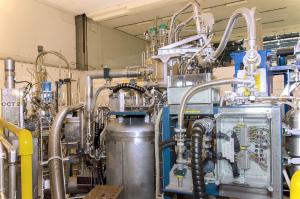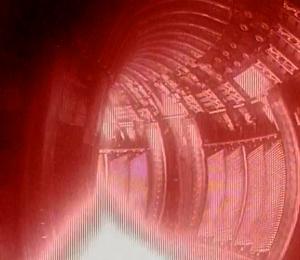First tests with JET's shattered pellet injector
A shattered pellet injector—a device which pre-empts plasma disruptions by releasing a spray of frozen deuterium-neon pellets into a plasma—is now in testing on the world's largest operating tokamak, JET, at the Culham Centre for Fusion Energy in the UK. These tests support the development of the ITER disruption mitigation system.
A disruption mitigation system is essential for reliable operations on ITER, which will have a plasma volume over eight times larger than JET's. The frozen pellet fragments rapidly decrease the plasma temperature, thereby dissipating energy and minimizing potential damage to the plasma-facing surfaces of the machine components during a disruption. The pellets travel at speeds up to 250 metres per second—nearly the speed of a jet travelling at altitude.
"Technically the shattered pellet injector on JET acts as a disruption itself, but in the future, it would be used to pre-empt the disruption. We are testing it on JET because we are trying to scale it to ITER. DIII-D is a much smaller device than JET, and JET is a much smaller one than ITER. So, the purpose is in scaling in terms of plasma size and plasma energy to get closer to what ITER will be," said Baylor.



